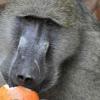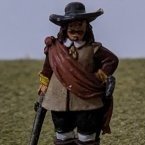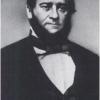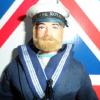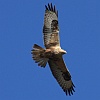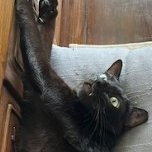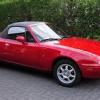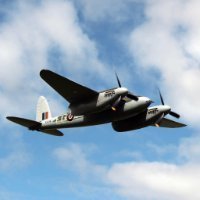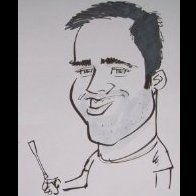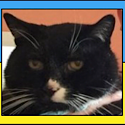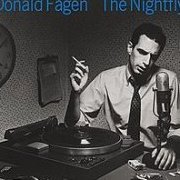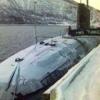Search the Community
Showing results for tags '1/72'.
-
Hi everyone, I did not really have any plan to enter this GB, although I did put my name down for it under extreme coercion. Then I realized that one of the two kits I had planned for the Frog GB would fit nicely in this Twins Mega GB! So here I am with the Frog antediluvian Beaufort Mk I, re-boxed by Encore as a Mk. VIII. Needless to say that there is no way this Beaufort can easily be made to look like an Aussie Mk. VIII. Encore did simply add some PE fuselage antennas and a decent decal sheet for a few RAAF Beaufort. But no mention of the larger vertical surface and the host of other differences. So I will quietly stick to a Mk. I, built mostly OOB. Not much happening on the inside with this kit: I have a Eduard IP I will add, with some safety belts and the navigator table and swivel chair in the nose, to try and get rid of the cavernous look. Oh, and did I mention that there is a lot of flash?! I am infatuated with the Beaufort, so it is now or never. Some photos will appear a bit later. Cheers JR
- 66 replies
-
- 16
-

-
- Encore ex-Frog
- Beaufort
-
(and 1 more)
Tagged with:
-
I picked up a number of kits from someone thinning out their stash last year. Included in this was a small cardboard box marked FROG KITS. The chap told me that they'd been unboxed and might not have instructions or decals so he didn't think he could sell them individually. It was attractively priced so I picked it up out of curiosity. I've had a quick look inside but it's all freezer bags with sprues and I've not gone through them to identify them or see what sort of state they're in. This seems the ideal opportunity to check it out. Once the GB officially starts I'll open the box again, get everything out and see what I've actually got. Assuming I've got any complete kits in there then I'll choose what I'm building from that.
- 57 replies
-
- 14
-

-
My Meteor is going okay so, in a burst of enthusiasm and ignoring all the nearly finished kits littering my workdesk, I've started another kit. I've had this one in the stash for years, not entirely sure why because I don't make Axis stuff. Anyway, I'm going to avoid my no-Axis rule and make it as a Bf-110 C-5. I took a photo of the sprues... But promptly forgot to take any more photos until I'll try to take more photos as the build progresses.
- 27 replies
-
- 21
-

-
So this is a first ...WiP bit late but better late than never. So first is the Matchbox .....very basic but I scratch built the cockpit....nothing fancy a modified non descript white metal seat side walls and instrument panel blah ....cant see much anyway. Started to drill out airbrakes but made a mistake so filled the holes and might simulate airbrake holes with decals. Got a C scale white metal upgrade kit for about 7 quid so started to add some details plus tanks,recce pod maybe etc. Modeldecal decals still to decide on squadron . Then I started the Frog kit...to be honest it seems to be a better shape than the matchbox ...especially the hump but they are Jag shaped so that will do for me ....I seem to recall the vert stabilser is a bit off but meh. Found some 'french fancy ' decals so looking forward to fitting those. Had a few snags with phots and can't delete the doubles so if the mods have got some time to waste can you help me out 😌 please. I think I will add undercarriage to the French cab ....needs some thinking about ...stay 🎶 ed
-
I have the Sword Thunderstreak kit too but in general the SH one looks more high quality straight from the box - so I think I'm gonna start with that. I did a quick side by side and the Sword kit seems slightly smaller - it's a bit shorter but then again the tailpipe section is thicker. Can't really say which one is correct though. But anyway, let's start with Special Hobby. Amazing cover artwork BTW! Nice pile of plastic. Details seem really nice too. And while the SH kit decals seem amazing - gotta love the colourful US birds - but I'm still drawn towards the Sword options. So this is the decal sheet for a Sword Thunderstreak and I'm gonna kick things off with a Dutch Thunderstreak. This is from the Sword kits manual. But I'm also thinking about getting Dutch Decal sheet, would give me more options. https://www.dutchdecal.nl/publications
- 20 replies
-
- 11
-

-

-
- Special Hobby
- 1/72
-
(and 1 more)
Tagged with:
-
A good few years ago whilst on an outing to the Vale of Glamorgan, I wandered into a "Toy Shop" and saw this. Having already built a Lindberg kit and then replaced it with a not particularly good Airfix version, I thought I would buy it, particularly as it seemed rather cheap for a Tamiya kit. It was not until I got it home that I noticed the "Plastic parts and decals made in Italy, other items made in Japan" on the box. In fact it is a reboxed Italeri kit with resin extras which I don't remember buying myself and rather think were made in Eastern Europe so what exactly was made in Japan I have no idea, but not to worry! The instructions are in Japanese only, so I will have to do a little research before deciding what exactly this is, but it seems to have a ventral fairing for a 37mm cannon. The colour of the plastic suggests that a desert version was planned at one time but the markings all seem to be for Russia. Looking at Scalemates Italeri did release it several times and it was also reboxed by Revell. One of the Italeri boxings did indeed included markings for a desert version and it has been sold as HS-129 B-1, B-2 and B-3. Pete.
-
Joining you with this kit, costing £3 at Lyneham last year. Which carried stripes after D-Day. Which is how I intend to complete the build.
- 23 replies
-
- 11
-

-
MIG-21 PFS, 1/72. Kitbash from two Eduard kits: - fuselage and canopy from PF kit; - tail is a mix of the two - mostly PF with lower part removed and replaced by parachute container from PFM; - wings and almost all the rest - PFM. Eduard resin cockpit (PF), resin engine, modified MF resin speedbrakes, resin missiles (R-3S). Small alterations to jetpipe cone (thinned walls, added internal structure). Roundels and fin flash from PFM Profipack kit, tactical number airbrushed with homemade viny masks. All comments are welcomed, Iulian work on the specific PFS Tail detailing the jetpipe Eduard resin engine
- 11 replies
-
- 37
-

-
I think I am starting to become a Meteor buff! Hot on the heels of the SH Meteor F.8 in SyAAF scheme, I started building the Airfix kit. I did not chose one of the schemes proposed in the box but an IAF scheme from the SH Kit: This is a good occasion to compare both kits and, spoiler alert, the Airfix kit is much much better! It is really well designed, the detail is excellent, the fit is top not notch and the moulding quality excellent. The cockpit tub is a 3 part assembly and has the characteristic horseshoe shape that its SH counterpart does not have: It is really easy to position it accurately inside the fuselage: Clever engineering. The seat is decent OOB but misses the harness and can benefit from a few added details: The fuel tanks have the rim that is missing on the SH F.8 and are more correct in shape. Note: the fuel tanks on the SH NF.14 are OK too. The engine heads are more detailed than on the SH F.8 but the SH NF.14 reactor heads are better. The IP, nose wheel leg and cockpit quarterdeck (is that correct?) have better detail: The air inlets in one part are a very good idea: No need to deal with an awkward seam between top and bottom half like on the SH kit. The engineering of the main landing gear bay walls is also really clever: 4 parts, a mortise-tenon system and you're done! The main landing gear bay roof only needs a black wash over the alu paint to make the details pop: I assembled the wings and painted the air inlet lips in black and white: The result can seem weird but the period pictures show they were actually painted this way on the original airframe. The flaps are provided as separate items but I always saw them level on the pictures. So, not really useful IMHO. I also painted the nose in black and white: But I have to re-paint it as I inverted the black and white areas! Doh! The main landing gear legs and wheels are the only letdown on this kit: Two gear leg halves and two wheels halves that have to be glued together. Filler is needed to get something clean. But that is only a minor gripe. So far, this is a fantastic kit and a real pleasure to build.
- 24 replies
-
- 13
-

-
Hi all, it has been a productive weekend, spent half a day on the spray booth and completed some final steps of two Starwars projects. Here is one of them, the A-Wing. You can find the WIP info here Here are the final outcome, hope you like it.
-
New Polish company decided to release new tool plastic kits of PZL W-3 Sokół helicopter. Firstly in 1/48 and then later in 1/72. Company have normal site, but it is empty now.
- 60 replies
-
- 2
-

-

-
Hello everyone. 401th Tactical Airlift Squadron - Komaki Airbase 2020. With my other project progressing to the finishing line it’s time to start thinking about the next subject. Having come back from S.M.W. 2022 I now feel I’m in a better place, my head feeling more planted for the future modelling days. For a little while I’m going to juggling two models in a bid to maximise productivity. 💯 Thanks for looking. 😉
- 69 replies
-
- 17
-

-
Hello everyone, here is my work in progress A-Wing. Test fit in an hour. Trial build is almost done Surface details is really nice After that, unassembled the kit, and applied Finishers green putty to smoothen some surface area on the fuselage. Rest of the parts are washed, and prepare for paint shop. The pilot seat has a large connector to "click" in the pilot, since I am not doing the pilot (as usual, what's new), the connector is removed and sanded before proceeding further. Sand the surface again, and seem it is smooth enough. Black primer time Followed by a colorful pre-shading
-
I have been struggling slightly with modelling mojo - due mainly to workloads and family commitments. I am determined to get building again and complete my first GB for 2024. My chosen kit is the Airfix 1/72 Mig-17F from: I pulled this out of the stash last night. Who knows I may even do the Skyhawk as well (I will obviously do another thread if I do). I seem to recall some issues with this kit shape wise but it looks fairly Mig like to me... I thought I had some other decals for this but now can't find them and the Xtradecal set I wanted appears to be out of stock. Ideally I would do a middle east based plane (fits with one of my collection themes) but the North Korean scheme shown above will do just fine 😉 A bit of history from Wikipedia... The Mikoyan-Gurevich MiG-17 (NATO reporting name: Fresco) is a high-subsonic fighter aircraft produced in the Soviet Union from 1952 and was operated by air forces internationally. The MiG-17 was license-built in China as the Shenyang J-5 and Poland as the PZL-Mielec Lim-6. The MiG-17 is still being used by the North Korean air force in the present day and has seen combat in the Middle East and Asia. The MiG-17 was an advanced modification of the MiG-15 aircraft produced by the Soviet Union during the Korean War. Production of the MiG-17 was too late for use in that conflict and was first used in the Second Taiwan Strait Crisis in 1958. While the MiG-17 was designed to shoot down slower American bombers, it showed surprising success when used by North Vietnamese pilots to combat American fighters and fighter-bombers during the Vietnam War, nearly a decade after its initial design. This was due to the MiG-17 being more agile and manoeuvrable than the American F-4 Phantom and F-105 Thunderchief, which were focused on speed and long range combat, as well as the fact that MiG-17 was armed with a gun, which initial models of the F-4 Phantom lacked. The obligatory sprue shot: As always all comments welcome. Dave
- 10 replies
-
- 14
-

-
I’ll be basing my build on the Airfix B-25C/D, to depict the Mitchell Mk II of No. 226 Sqn FW130 ‘MQ-A’. Because 2024 commemorates the 80th anniversary of D-Day, I’ll be painting the aircraft as it appeared in June 1944, with D-Day stripes. I’m not sure I’ll be able to commit to the D-Day GB based on the calendar, so it was important to me to choose a suitable subject here. The following two images are the property of The Imperial War Museum, and posted under their non-commercial licence for primarily information-led, research-oriented purposes. While I’m sure the sprues are well documented, I like to start my builds with a little inventory. I’ll use the kit decals for stencils and interior parts, and a Techmod sheet for the specific markings for FW130. Images show a ‘larger’ roundel on the port wing, which is actually the original US star and bar insignia, overpainted with olive drab, and covered again with the RAF roundel. Therefore I’ll use one of the US insignias from the original sheet there too. I’ve always quite liked the B-25 (particularly the later strafers with incredible parrot and bat heads!), but know very little about the type, so will spend some time researching the variant and interior details etc before the build kicks off. Looking forward to watching everyone’s builds take shape, there are some really interesting projects lined up. Cheers, Nick
-

Great Wall Hobby 1/72 F-14A - Now Bandwagon 202
Jon020 posted a topic in Work in Progress - Aircraft
Having completed Hobbyboss and Academy’s 1/72 F-14As I thought that I probably knew enough about the aircraft layout to tackle one of the GWH kits that were sat leering at me from my stash. Just to recap – this was Tomcat No. 2 completed a couple of months ago Wichita 103 HIP killer by Jonathan Hughes, on Flickr Familiarity would be useful given the borderline ambiguity in the instructions (lots of it but with wrong parts called up and add-in correction pages strewn loose in the box), and there are lots of bits to manage. So, armed with a little confidence, I thought I set about this with the belief that despite its complexity that there wasn’t too much wrong with the kit. Right? Well, perhaps that’s not quite right but those encountered so far have been addressed. Tomcat project no. 3 by Jonathan Hughes, on Flickr On opening the box, one can’t fail to be surprised at the number of parts crammed into the box attached quite well onto 29 sprues.... that’s quite a lot for a 1/72 aircraft kit. The instructions are as vague and error strewn as expected but at least all parts are labelled with an alpha and numeric so you can find them easily on the right sprue... or can you? Why oh why are there 7 A sprues? Where’s the sense in that? Did they forget to change the alpha designator I wonder. As for subject, having completed a VF111 aircraft and a VF1, I thought I’d go for one of the other famous fighter squadrons and have opted for a VF84 aircraft; aircraft of other squadrons will follow... promise. However, as with my last model, I haven’t chosen one of the oft chosen schemes instead pluming for a 1988 rendition of the Squadron Commander’s aircraft BuNo 162702 which had the hi vis markings despite most other aircraft being quite plain at the time. The image that captured my attention is on page 226 of the kindle edition of Detail and Scale Colour and markings of U.S. Navy F-14 Tomcats Part 1 (Atlantic) by Bert Kinsey (may he get well soon). The photo (and I’ve found others since) shows the aircraft presumably returning from a gunnery training mission, with a training AIM-9 round, an ACMI pod and plenty of soot staining around the canon muzzle. So, other than a twin AIM-9 LAU-7 fit on the wing pylons, it should all be do-able. The tan colouring on the radome adds a nice splash of colour to the rather weary looking finish it exhibits. I’d acquired the kit about a year ago (or so)... it took a while to get to me from China... but that was in lockdown. It’s easier to come by now, but despite the time taken, the seller kept me informed with tracking info. I bought the Eduard sets (I’ll probably use some of the bits but probably far from all of them) and just before I started in earnest, the Quinta Studios 3D cockpit panel set. I’d been very impressed with how the transfers settled over the molded detail on the Academy kit but my friend Brian was experimenting with a few cockpit tubs from different manufacturers and found that the GWH transfers were not as refined as the Academy ones and didn’t settle as well... much thicker. So, the Quinta items were secured as a hopeful solution. On closer inspection of some of the main parts, the panel lines seem quite nice but there seems to be a molding issue (mold alignment?) on some parts. One easy to illustrate example is on the nose halves. Here the starboard side and you can see that I’ve started to try to clean it up with some 400 grit paper. More work was needed, progressing to finer and finer papers until it was polished smooth and just a little re-engraving needed. This is not so much of an issue on the other nose half as it lines up with the gun panels, but it’s also evident on the intake trunking and lower fuselage half – each was addressed as above. Some smaller parts (such as nose gear) also exhibited this and they needed cleaning up a little more carefully. A check of the other two I had in my stash showed one to be worse and one to be about the same. I’d expected a little better in the quality control – or alignment of molds. At least it’s fixable... but at the cost of this kit, I’d hoped for better. Molding lines. Hmmmmm by Jonathan Hughes, on Flickr Before starting, I’d noticed another builder tackling the kit, or a D model version of the kit, presented by rymulus. This identified that the RIO’s instrument panel and coaming were too narrow. So, this was the first thing I looked at, not really wishing to take the approach that rymulus has done with a complete scratch build of the panel (and you should see the rest of the detailing being undertaken – quite mind numbing and something my fingers and eyesight just couldn’t master) I set about to examine this and consider alternative options. As you can see here, the coming is narrow – the instrument panels on the outer edge should overlap those of the panels that are in front of the cockpit side panels... evident here is that they don’t – the whole thing is far too narrow. I suspect that if you had the canopy closed, it’d not matter too much. I’m doing mine open, or I’d hoped to... so, problem. Narrow RIO coaming by Jonathan Hughes, on Flickr Rymulus’s solution was to cut the coaming piece in half add 1mm in the middle and make a new IP. After some ferreting around I came up with an alternative approach. Some time ago I bought an Aires cockpit set for the Hasegawa kit (nope, not made that yet either), but it was damaged in transit, so the seller sent me another one. That was more damaged in transit and at that point we gave up. But, the RIO panel was fine (in each). I took a look to see if that would fit. The sills in the cockpit are a little narrower than the Hasegawa I guess, so some thinning of the edges was needed, but I did managed to see that this would fit. Will this work? Aires RIO coaming to the rescue. Pre fettling by Jonathan Hughes, on Flickr One other item that I needed to resolve was that of the facia. Here the Aires item (right) and GWH item (left) are compared... with the Quinta 3D print (sized for the GWH kit) part 25. RIO panel comparison. Quinta 3D print behind by Jonathan Hughes, on Flickr My solution was to file the face flush and cut up the Quinta part into three items, as I’ve shown here positioned on the Aires panel. With some paint and touching up. I hope it’ll work. It’s what I’ve decided upon at least. As the upper panel is larger (again), I’ll retain that and paint it carefully. 3D print cut up and positioned on fettled Aires item by Jonathan Hughes, on Flickr With the Aires item added and the coaming side panels now all glued in place (tamiya thin) and sanded flush, the rear bulkheads looked decidedly sparse, so I decided to add some finesse with some stretched sprue, plasticard, microstrip and lead wire... some filler and some artistic license. The Aires coaming was actually a little damaged; it’s handle on the top was cracked and didn’t take to prising into position, so a new one from plasticard and stretched sprue was made and added... and some further lead wire details added. Cockpit tub detailed by Jonathan Hughes, on Flickr I’d a pair of GWH detailed seats that I’d made for the Academy kit that I could use, as I fitted the Academy seats in the end, etched out a bit to take a pair of Reedoak figures, but I decided to keep them to go in the VF1 kit should I decide to display it sans crew at any point and went to use the Aires seats that had come in the Aires cockpit set (that was damaged)... seats were fine. Width wise these sit fine, although I added a plasticard spacer under each to rise them to the right height. Detailed tub with Aires seats by Jonathan Hughes, on Flickr And shown here inside the nose section for a dry-test fit Tub trial fit by Jonathan Hughes, on Flickr Two other items that need attention at this stage of the build are the nose gear bay, and the nose gear leg (which I put “mostly” together at the same time to check, check, check and recheck fit – to confirm that it will go in later in the build. It will. The gear bay has some detail, but as rymulus shows in that build, the nose gear bay is the wrong shape (!) and the detail is molded quite heavily and still relatively sparse. I thought I took more photos that I seem to have (at a time when time was limited due to other commitments so I just build some bits when I could) but I added some plasticard and microstrip and lead wire to the nose gear bay to fill it out a bit. I did the same to the nose leg, mainly to add pipework etc, but not too much. Important – the nose leg still fits in. Nose gear in bay test fit. Fettled and detailed (Eduard, microstrip and lead wire) by Jonathan Hughes, on Flickr The nose leg is shown here after some primer and paint was added. It’ll be cleaned up and sorted before going further. I’ve left the two side actuators off at present (are they kneeling actuators?) so that I can paint the oleo easier. I’ll add them later in the build... they’re attachment is quite large to shouldn’t pose a problem. I’d had to add them in the Academy kit as they’re missing (as is the retraction jack)... again not shown here, but is best to fit into the bay, fit the leg, then attach the jack to the leg. I’ve tried several options. Detailed nose leg painted white by Jonathan Hughes, on Flickr Right, so back to the build. RIO coaming – I’ve a plan. Good. Press-on. Fuselage halves and intakes are quite a complicated set of assemblies but go together quite well. Dry fit several times before committing to glue... noting that some parts are a little vague in placement in the instructions, that opened rear top of the intake rear behind the ramps, being one example. Oh, and the rear ramp too. Anyway, with some trial and error and patience, it can all be dry assembled, except the jack on the rear ramp, and test fitted. On inspection through all angles, it became evident that there is a gap that can just be seen through the intake where the fuselage upper half joins (or doesn’t quite) the lower half. Discovered intake gap by Jonathan Hughes, on Flickr On looking at photos, a PE piece would be ideal for this to depict the framing of the item that sits here neatly, but I decided to make a couple of small, thin, plasticard inserts to attach to the fuselage lower half, big enough to cover the gap. And these are shown here Intake gap solution by Jonathan Hughes, on Flickr Added bits, another view by Jonathan Hughes, on Flickr When the two halves are now brought together, the gap is hidden. Not perfect, but it’ll do Gaps hidden by Jonathan Hughes, on Flickr A little filler was added to hide the injection marks inside the intakes although I wasn’t sure these would be visible or not. The forward sparrow recesses have a large hole at the front of each, possibly to allow location of the phoenix pylons. Why these are fully molded as holes when all other holes need opening out, I don’t know... but I put a small piece of plasticard over the inside and filled these too. You may be able to see a little filler at the rear of the gun port cover. Hmmm another kit error to explain. Some filler needed by Jonathan Hughes, on Flickr The kit comes with a choice of two gun port options, an early and later A model version. But both parts have vents at the rear that only appeared very late on in production; the rear panel may have an access hatch but no vents. Wrong gun cover by Jonathan Hughes, on Flickr As filler would not take in the shallow cut outs and the overall panel was too recessed, I cut out the offending panel to a shallow depth and added a new thin piece of plasticard to replace it. Fixing the rear of the gun cover by Jonathan Hughes, on Flickr The plastic was thin so I cut out the shape of the access cover Access cover hole cut out by Jonathan Hughes, on Flickr And added a new part to fit within the hole. Not perfect, but it’ll do and it corrects another error ... hopefully I’ll not find (too m)any more. Panel complete by Jonathan Hughes, on Flickr Today, I pressed on with some paint after primer and first cover coats had dried (Mig one-shot) ... intakes and bits, in white... along with nose gear bay etc., all with Mission Models acrylic; cockpit tub was painted in a 70/30 mix of mission models Light Ghost Grey and Light Gull Grey in an attempt to match the Quinta Studios parts; some black added to the outer parts of the coamings (MM paints 70/30 mix of tire black and black) and details were then highlighted some details and painted detail parts (coaming fabric, seats, tub details) with Humbrol enamels as is my preference on small parts. First proper paint session by Jonathan Hughes, on Flickr So, in summary, at least I’ve started. At the moment, I have less time for modelling than at any point in the last few years so maybe I should have chosen a simpler kit. The kit complexities were known and I’d been advised of the need for plenty of test fits to ensure all is well before committing to glue. The parts’ fit is quite good... but a little vague in areas. The kit errors and quality of molding is a little annoying as I had expected a little more in terms of quality... but I will persevere with the hope that it will provide something that is worth the effort. Thanks for reading. Jon- 70 replies
-
- 13
-

-
I can't quite pin down when it started, but I think I may have developed a Spitfire acquisition problem. I think it happened when I bought a PR Mk.XI for the Recce and Scouting GB after joining the forum earlier this year, then followed it up with a build of an FR Mk.IXc in the same GB; I'd already restarted my modelling with a couple of Eduard Mk.XVIs before lockdown, followed by an Airfix Mk.I and an AZ Models Mk.IIa (LR) in 2020 when I paused the Eduard ones until after a house move (not wanting to knock off IFF aerials etc.). After finishing those, I acquired an Eduard Mk.IX and accidentally bought a Mk.22 in the local model shop, but didn't start either. It seemed like it was under control. Then I found and read @ModelingEdmontonian's Hawker Hurricanes Around The World thread, modelling more-or-less every non-RAF marking scheme of Hurricane. And I bought more Spitfires, and started thinking 'well, I've done one each in PRU blue, PRU pink, Temperate Land Scheme (with and without sky band), Day Fighter Scheme (with vestigial invasion stripes) and DFS (2TAF with C1 roundels on the upper wings) - what if I try and do something in each major RAF marking scheme?' So I bought an Eduard Mk.VIII, which still lies in the stash, thinking that I could add a SEAC colour scheme. Then I thought 'hmmm, I didn't make any Griffon-engined Spitfires when I was modelling in my youth, it'd be good to build a couple', and I started researching how to kit-bash a Mk.XII. Then I discovered Kingkit.co.uk. And then this happened. Ooops. The Admiral Spitfire Mk.24 probably has a prop that's too small (I've not measured it yet) so I'll make sure it's removable for if I ever find an aftermarket one. The Airfix Mk.22's prop will be replaced by a Freightdog one, and the original which will then find its way onto the Sword Mk.XIV (which will be converted to a Mk.XVIII - are you paying attention at the back?). One of the Seafire Mk.XVs (probably the Ventura, but maybe another Sword Mk.XV) will be turning into a Mk.XII, although I've just put a bid on fleabay for an Academy stumpy Mk.XIV and a Brigade Spitfire XII conversion kit which I might try on something. Griffon-wise, there are also Marks XIX, 45, 46 and 47 to consider at some point, although I'll probably draw the line at the Mk.IV/XX. Then there are the Merlin varieties to start thinking about... This will be a slow-burn, long-term project as I've been enjoying doing the GBs and have my eye on a couple which can't have a Spitfire or Seafire shoehorned into them, and will be used as a focus for my modelling rather than haring off to try different things. First thing is to finish the Mossie for the Airco & DeHavilland GB and the Mustang for the Southern Europe GB - then I'll probably start with the (hopefully) nice and simple Airfix Mk.22 to get the mojo going. Although, knowing me, it'll probably get started well before the other two are finished. Here's the current state of affairs, in poor lighting as the weather is currently dreadful. Here's looking forward to adding a few more before the year is out!
- 147 replies
-
- 28
-

-

-
The new BM 30 from Zvezda, I first built up the multi part chassis and weathered it, the part fit was good, although it looked a bit daunting at first and rife for mis alignment, it goes together quite easily with practically zero room for errors. the wheels are just put in place and not fixed. the cab and crew cab go together just as easy as do the rest of the body. whilst I was at it, I dragged the S 400 kit also from Zvezda that had been lounging round unfinished out. The missile tubes are a pain though, each part comes in two pieces with some of the rear parts having three. this is before cleaning seams and attachment points! getting the tubes to fit was problematic at best, although they do have positive location points getting them all aligned was fun! best part of an hour for one section! Everything is just placed on the chassis nothing is glued in place apart from the tubes, the next section went a bit quicker, possibly because I put one of the tubes in a safe place! and possibly because I only glued the rear portion and the front piece is just there for alignment. I also gloss coated the cabs and launch area so I could start weathering. whilst I was on a roll I thought I might as well get on with the Pantsyr
-
Italeri’s 1/72 DUKW, with some scratch built additions and help from Haulers PE set, and limber from Italeri’s Quad/25pdr kit to add an interesting bit of cargo. Hope you like.
- 12 replies
-
- 36
-

-

-
The Wallace The Shark And the Wyvern. Wish me luck
- 42 replies
-
- 12
-

-
My first builds for this GB. These are both based on the old 1967 tooling, updated in 1982 to cover the P-70 night fighter. As I wanted to build both, and they have 90% commonality, it makes sense to have just the one build thread. I bought both of these kits in 1996 a few weeks apart, probably in different cities. Combined cost: < 10 Irish Pounds (c. 12.70 Euro in today's money). The P-70 is in a Matchbox box, which in those days was just another way of selling any mold owned by Revell. Because I dislike painting black on black plastic, I have swapped around most of the parts. The basic tooling includes the drill-out holes for the P-70 ventral gun pack, and for the dipole aerials on the port wing. There is one missing main undercarriage door (easy to replace), and one missing tiny oval side window (Clearfix to the rescue). I have nothing fancy planned for either kit. The bomber kit has the option to build a USAAF A-20C, but the SAAF Boston III was always my first choice.
- 45 replies
-
- 24
-

-
- Revell
- A-20 Boston
-
(and 1 more)
Tagged with:
-
It's been some time since I posted a build on here, even longer since I took part in a Group Build but this one has tickled my fancy so, I hope no-one minds me joining with this old kit. The sprues: Should be a simple build, even if I add some bits'n'bobs in the driver's compartment. I may rescribe the panel lines, or I may not. Scalemates tells me this is the 1986 boxing of a kit originally released in 1970. The last 37 years certainly haven't been kind to the stickers (even if they were in register and the tail stripes weren't wrong). No matter, I have plenty in the decals box. I've got some Hurricanes to finish but should start this one at the weekend.
- 34 replies
-
- 19
-

-
Here is my completed Sword 1/72 Vought RF-8A Crusader Crusader over Cuba boxing, what you get in the box is not a an RF-8A but a RF-8G so a bit of work is required to backdate the kit to the RF-8A mainly sanding the extra lumps and bumps on the kit I tried my best, but on checking references I have missed a couple but I know next time, the wheels as supplied in the kit are not correct for a RF-8A but there is no alternative to replace them with, I changed them for Reskit items anyway as i find them easier to paint. The instructions with the kit are confusing in places and the decals supplied do not match whats depicted on the box. So not perfect by any stretch but I present my Vought RF-8Aish. 1/72 Vought RF-8A Crusader by Phillip Wilmshurst, on Flickr 1/72 Vought RF-8A Crusader by Phillip Wilmshurst, on Flickr 1/72 Vought RF-8A Crusader by Phillip Wilmshurst, on Flickr 1/72 Vought RF-8A Crusader by Phillip Wilmshurst, on Flickr 1/72 Vought RF-8A Crusader by Phillip Wilmshurst, on Flickr
- 19 replies
-
- 77
-

-
What, another ModelingEdmontonian project? Well, what can I say? As I "travel the world" from my modelling table I have three projects underway already: "Hawker Hurricanes around the World," "Last Legs Ponies," and "Minor Gustavs." Now, I want to introduce "Sexy American Singles in South American Service," which is a spin off of Last Legs Ponies. For Last Legs Ponies I am modeling American WWII fighters that ended their service lives in air forces around the Caribbean. This concept is similar, but I am picking one American WWII single-engine (not necessarily a fighter) to represent each South American nation, with the exception of Colombia and Venezuela, since they are being represented in Last Legs Ponies, and Guyana and Suriname, which I don't believe have operated any relevant aircraft. Oh, the other qualification I have is that they have to be sexy American singles ("sexy" helped with the alliteration I was going for), but that's a subjective criteria 😉 . Here is a map of the eight countries and a/c I plan to model: I have Brazil (Academy P-47D) underway already, but really why I am introducing this project now is that I intend to join the Salty Sea Dog GB with Argentina's F4U-5, so more action will occur in my thread over there for now than in this one. More to come!
-
Continuing on with my Hasegawa Japanese planes, but this time a newer kit. My previous two builds were from the mid-70s but this (and the next one to come) is from 2008, one of the rare models I bought brand new. The quality of the plastic and fit were exactly as I had expected and this was a joy to build. I completed this in March of 2023. Painting the Shoki was also quite easy. At this time I had been painting many of my models with a silver primer (I no longer do this) and I just left the primer without a coat of paint. I would likely opt for silver lacquer now, but at the time this was quick and looked the part. The aotake wheel wells were painted in Vallejo Aotake; the anti-glare on the nose is AK Real Colors' SCC 14 Blue Black. The white and yellow parts are also using AK Real Colors, and the red on the tail is Tamiya. The spinner and propellers are AK's 3rd Generation Acrylic Mahogany Brown. I think at the time of making this, this was one of the best finished products I had made up to that point. ----------------------------------------------------------------------------------------------------------------------------------------------------------------------------------------------------------------------------------------- The Ki-44 Shoki, codenamed 'Tojo' by the Allies after the Japanese Prime Minister Hideki Tojo, was created as a high-speed interceptor aircraft. It was somewhat of a departure from earlier Japanese planes that favoured manoeuverability over all other aspects in that the Shoki stressed speed and rate of climb, as well as having heavier armaments. The Shoki took a mostly air defense role, defending their occupied territories and home islands from Allied bombing runs. Production on the aircraft didn't last long; the Japanese stopped making the Shoki in 1944 in favour of the Ki-84 "Frank". However, captured Shokis continued to be used by the Chinese in their Civil War, as well as the by the Indonesians during the Indonesian National Revolution. No Ki-44s survive today except for a single wing section at a museum in China.

